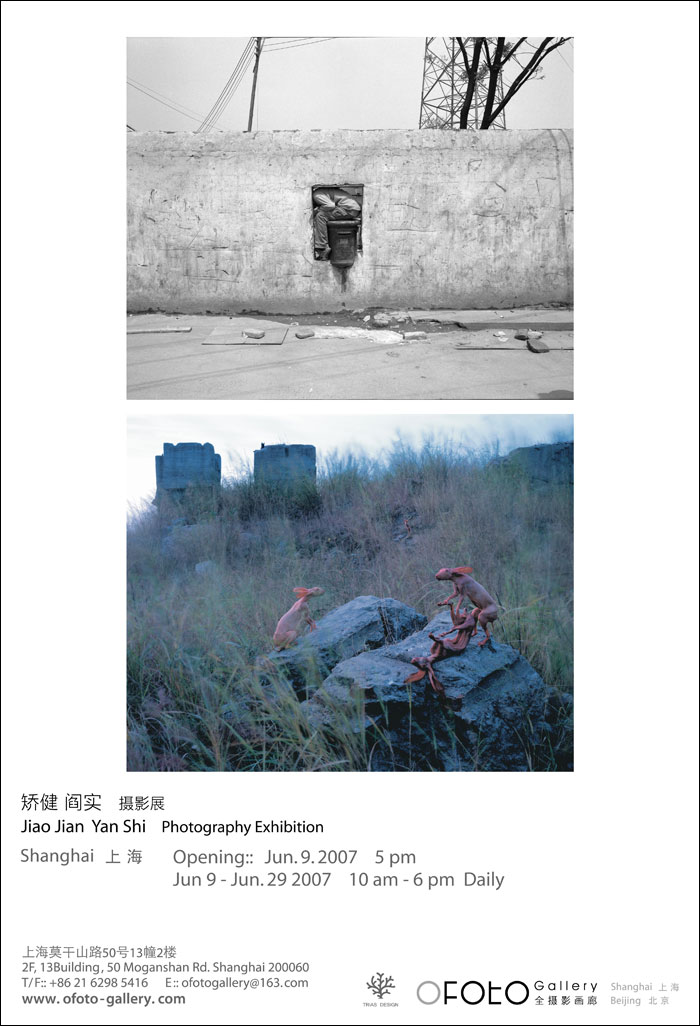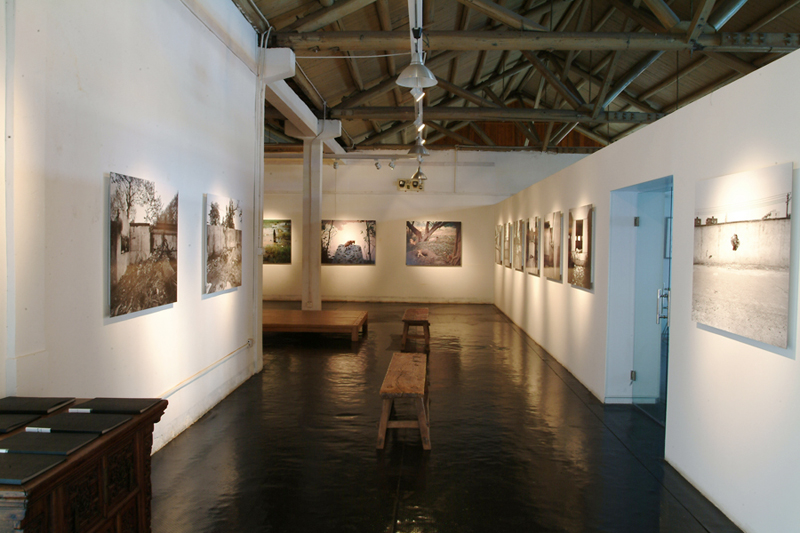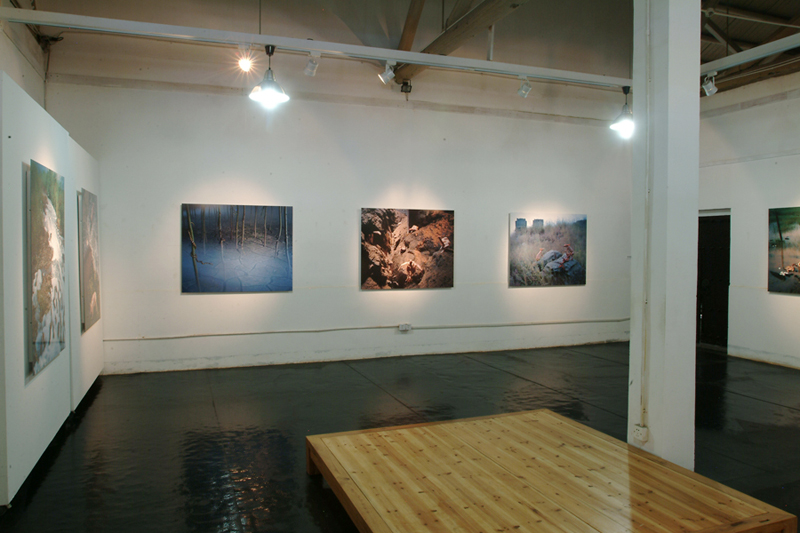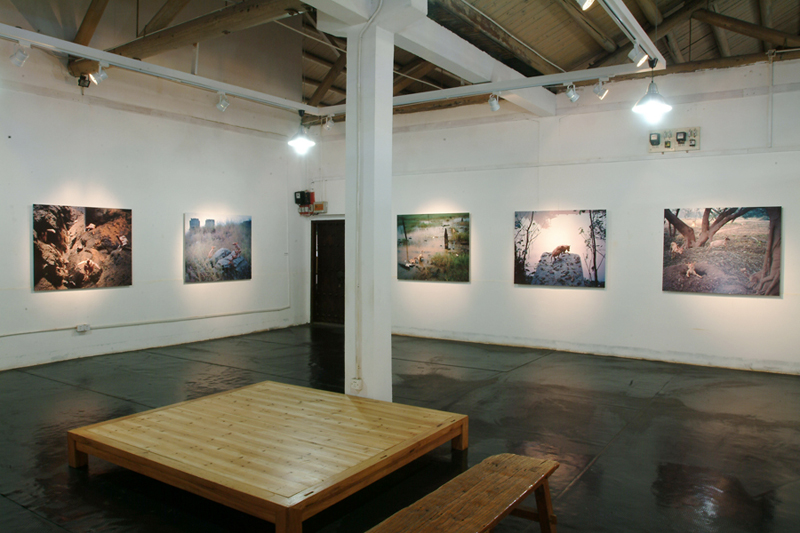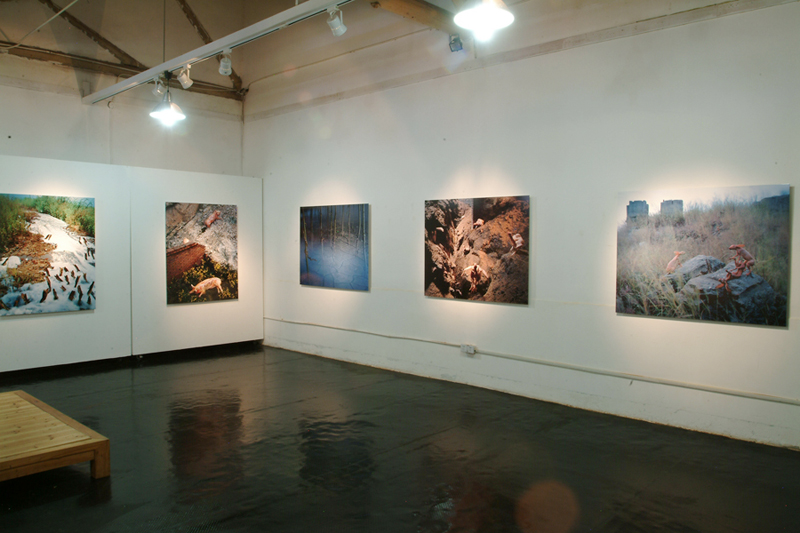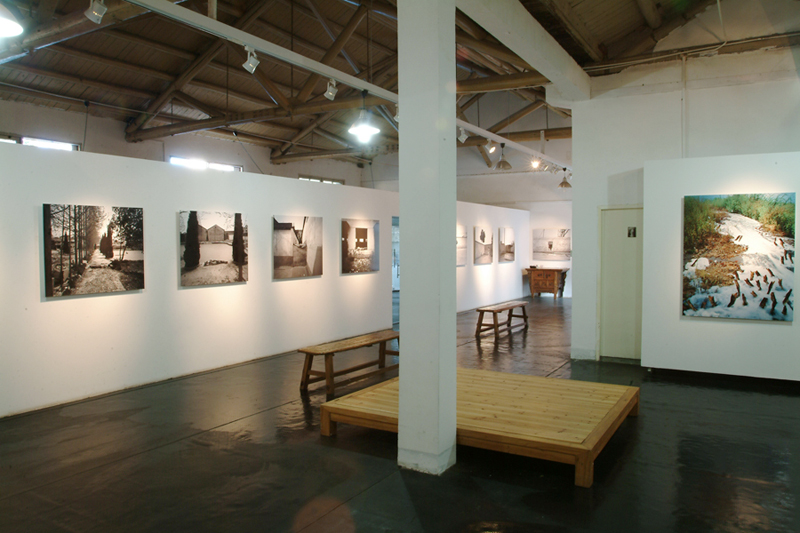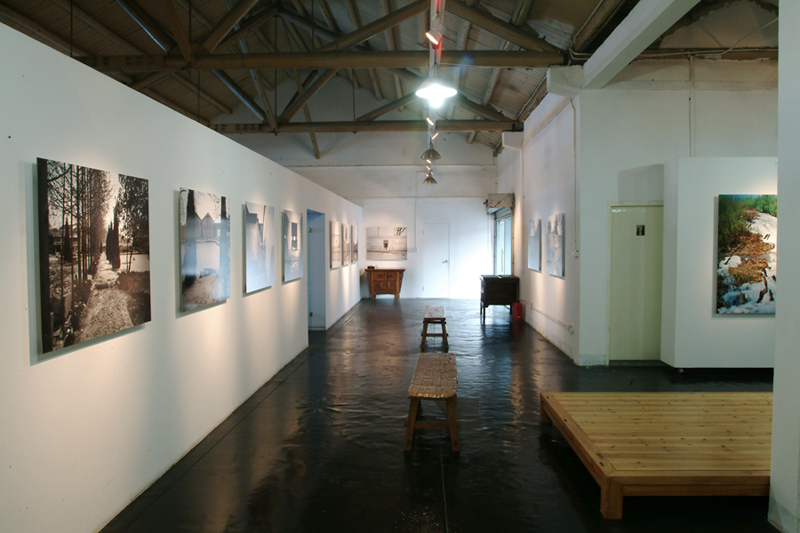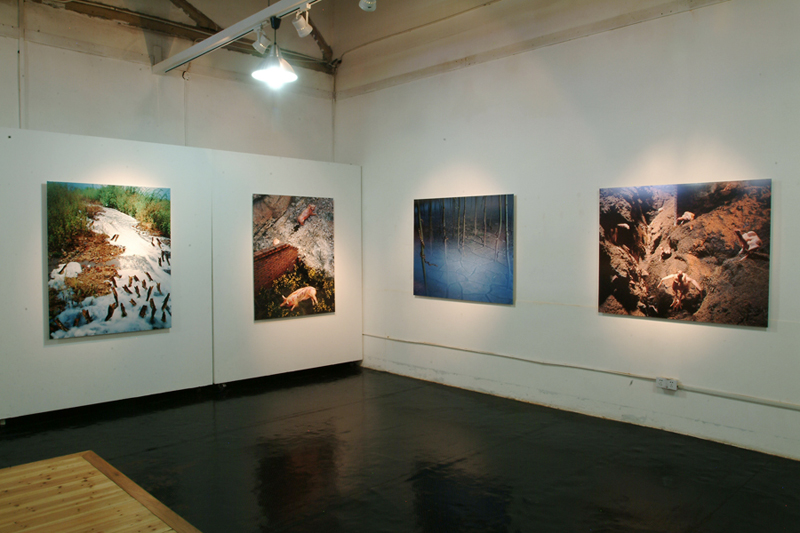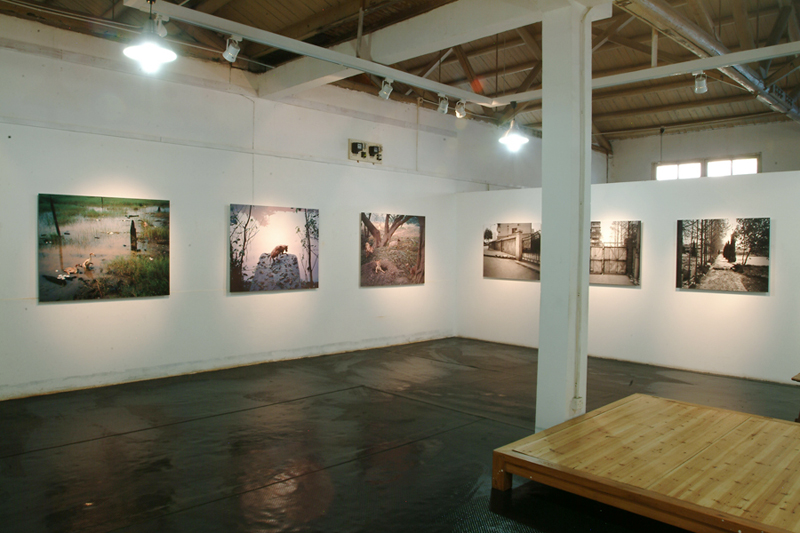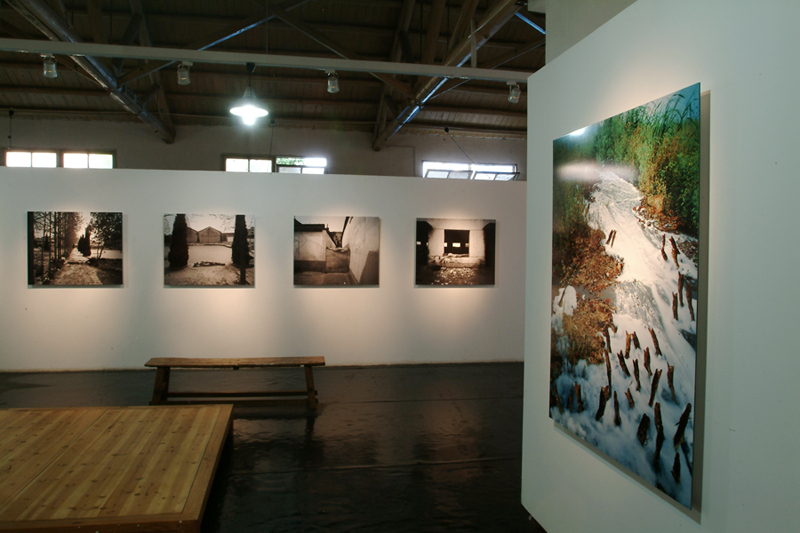It Is I
by Monica Dematté
I would like to juxtapose to Jiao Jian’s works with an aphorism by Pessoa:
The abyss is the wall I have
My being has no measure
Jiao Jian’s search for a space, for a place where his existence makes sense as it ‘fills the void’ left by others, suggests an existential restlessness. The very fact that he has to adapt the shape of his body to holes in concrete walls seems to refer to a deep uneasiness in accepting fixed roles in reality. Human body’s rounded lines are forced into uneasy postures by sharp-profiled walls. Although trying hard to amalgamate with these, Jiao Jian’s body cannot camouflage in the flat surface around him, not being as solid and even as the cement. They are just incompatible. I find these images, with their basic composition and their formal elegance, very poetic.
Jiao Jian is based in Hangzhou, where he teaches photography at the School of Multimedia Arts.
7/2203
Jiao Jian’s self-portrait
Maurizio Giuffredi
Jiao Jian’s self-portrait expresses his desire of change but in a very peculiar way. Jiao Jian reintegrates the reality thus becoming what someone else (the man) or something else (the time and the carelessness) have destroyed and deserted. Maybe he wants to try to re-establish, by using his body, a lost balance. This use of his body implies a sacrifice and a regression. A sacrifice because the body gives up its functions and its so called natural postures, a regression because the body tends to become pliable, plastic, without inner supports in order to get mixed up with the inert substance, in this case the brick, the stone. Differently from the regression present in artists like Appelt and Mikkinen, who wanted to merge and mix up with nature, with mother earth, Jiao Jian’s regression seems to refer to an architectural space. But deeply inside, the operation is similar. Jiao Jian integrates the holes and the leaks of the walls as he tries to re-establish the organisation of the boundaries that characterizes each living unit, organisation that comes in turn from the prenatal space, being every home a substitute of the womb. His is an attempt of controlled mimicry: Jiao Jian becomes very similar to what is missing. But only similar.
His body is there and we see it.
Apparently Jiao Jian’s self-portraits seem to express the horror of the void, a horror familiar in the Western world from time immemorial. But if you look at it very carefully, he, instead, searches exactly the void, that void, which every fence creates to protect and safeguard the existence of those who live in it.
7/2003
